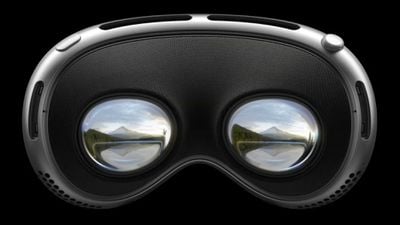Apple is reportedly investigating the use of lower-resolution displays for a budget-friendly version of its Vision Pro spatial computing headset, according to recent reports from DigiTimes and other industry sources.

Apple has received OLED display samples from Japan Display (JDI) with a pixel density of around 1,500 pixels per inch (PPI), claims The Elec. This is significantly lower than the 3,391 PPI displays used in the current Vision Pro, which launched earlier this year starting from $3,500.
By reducing the pixel density, Apple could substantially cut down on manufacturing costs while still offering a high-quality visual experience. Indeed, reports as far back as June indicate that Apple has been sending requests for information (RFIs) to various display manufacturers, including Samsung Display and LG Display. These RFIs have reportedly asked for OLED displays with pixel densities around 1,700 PPI, suggesting Apple is exploring multiple options for its cheaper headset.
Notably, the sample provided by JDI is said to use glass core substrate (GCS) OLED technology, rather than the OLED-on-Silicon (OLEDoS) displays currently used in the Vision Pro. This shift in display technology could further contribute to a cost reduction.
Bloomberg's Mark Gurman in June claimed that a cheaper Vision Pro could require a tethered iPhone or Mac to operate, which would allow Apple to save money on processing power and components needed to make it a standalone device. Gurman also claimed that an existing prototype lower-cost headset, codenamed N107, has a narrower field of view compared to Vision Pro. Apple could even potentially eliminate the EyeSight feature and use lighter weight build materials.
Regardless, the development of the device apparently remains at an early stage – DigiTimes suggests it could take two to three years before it enters mass production. That's a lot later than previous predictions that we could see a late 2025 launch. In the meantime, competition among display manufacturers to secure Apple's orders is expected to intensify, with companies from South Korea, Japan, and Taiwan all vying for a piece of the potentially lucrative contract.
























